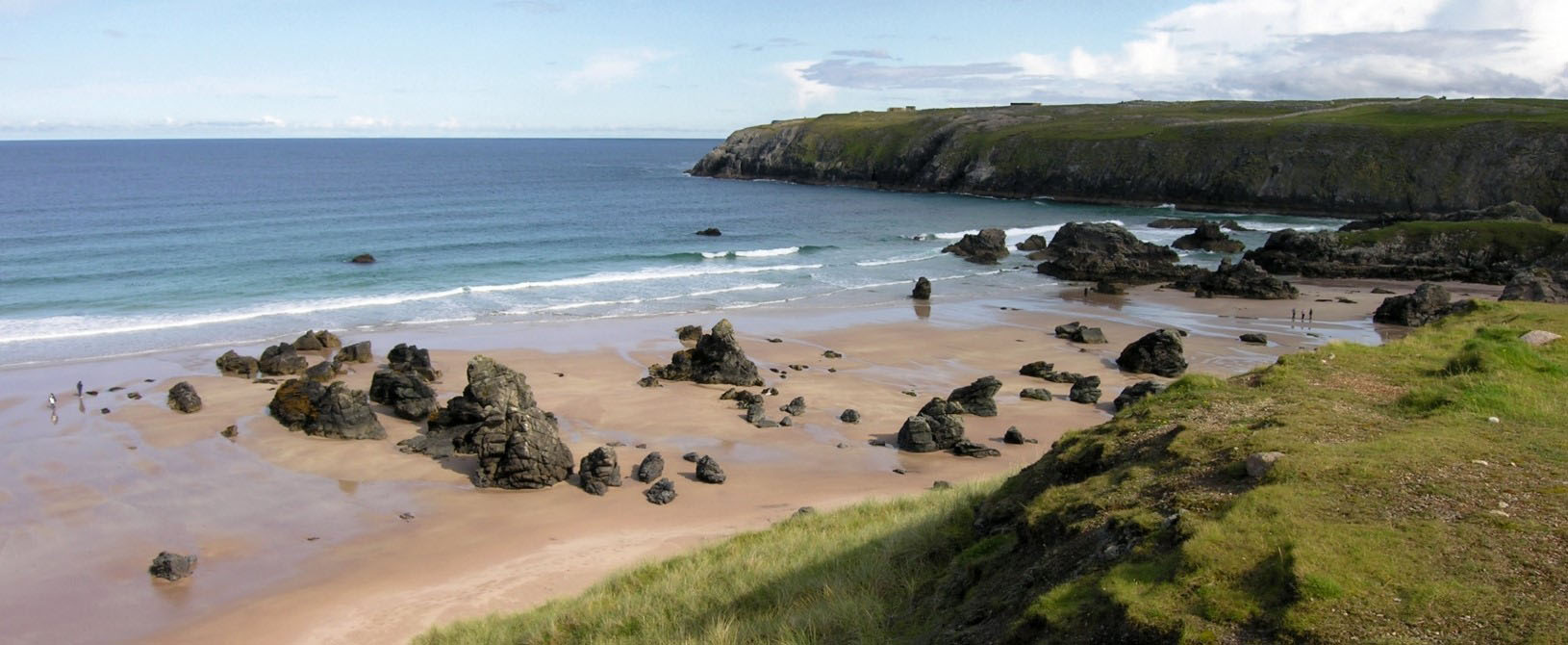Issue 17, Autumn 2002
Usually, I write this page sitting in front of a computer in my study at Inversnaid occasionally looking out across Loch Lomond to the Arrochar hills beyond, but today I can see a different landscape, mountains and valleys certainly, but the peaks are more rugged and the cottages in the valley below are roofed with ancient orange tile rather than Scottish slate.
I am in Cantabria with my son Neil and we are organising a new venture which will begin next season. I feel we now have the experience and people to enable us to offer more choice by arranging holidays in areas other than Scotland. Although these will be in the nature of a trial run, we hope to extend the destinations in future years. If you are interested, then there are more details on the next page and in the enclosed Lochs and Glens programme for 2003.
Back home summer is just a memory, but this autumn's colours are as vibrant as I can remember. The last few weeks have been a perfect time to be in Scotland.
In May our first grandson, Josh, was born, (see back page).Whether or not he will eventually join the company, one can only speculate, but in the meantime I feel very fortunate that both of my sons work so ably with me and our wonderful team here at Lochs and Glens.
As you will see in the following pages it has been a busy time for us since we sent you our last newsletter, bookings have never been better and our new excursions have run successfully and been popular. It becomes increasingly difficult to find different destinations each year, but with so many regular travelers it is important to try.
On checking our records recently I was surprised and delighted to see that over 1000 people have had 10 or more Lochs and Glens Holidays. A recommendation indeed!
Michael Wells
The Great Trossachs Flood
On 30th July a devastating flood hit the Trossachs area. Several hours of torrential rain caused the local rivers and streams to burst their banks and, at the rear of the Loch Achray Hotel trees washed down from the hills and blocked the bridge, forcing water into the building to a depth of over four feet. Guests were evacuated to a hotel in Stirling but, by superhuman efforts, all were able to return two days later, although eight bedrooms are still, 10 weeks later, under repair.
Parked cars were washed away and over £7,000 worth of bottled beers, wine and spirits were condemned to a skip as, even though the contents were sealed, there was a possibility that contamination had taken place. It quickly became clear that the skip in question needed a guard as workmen, apparently willing to take a chance, were seen climbing in!
The croft, the long disused tearoom at the rear of the hotel, has had to be demolished and plans to redevelop the area are well underway.
The Inversnaid Garrison
In September, the company bought the Garrison Farm at Inversnaid, a site of considerable historical interest which lies about a mile from our hotel. Within the grounds of the farm lie the ruins of the original Garrison, the military barracks built in 1718-19. This was the first in a series created after the Jacobite rising of 1715. Originally the buildings were three stories high and accommodated 80 soldiers who were garrisoned there to hunt down the famous Rob Roy MacGregor as well as attempting to keep order during the .45 rebellion when the Jacobites were fighting to get 'Bonnie Prince Charlie' onto the Scottish throne.
There is not much left of the buildings now, much of it was subsequently demolished by Rob Roy's son James, but guests staying at the nearby Inversnaid Hotel might like to make the 30 minute walk up the hill to see what remains. Most of the surrounding farmland will eventually become part of the Inversnaid RSPB bird reserve.
Kilchurn Castle
For over 100 years guests staying at the Loch Awe Hotel have gazed down from the terrace to the ruins of Kilchurn Castle. They were the subject for many a Victorian artist and more recently they have been photographed for countless Scottish calendars. But few who have admired these dramatic ruins have known much of their history.
According to legend the original stronghold was built around 1440 by Margaret, wife of Sir Colin Campbell of Glenorchy while he was in the Holy Land fighting the crusades.
For seven years Margaret supervised work on the tower using money paid to her as rent from her husband's estates
During all this time Sir Colin wrote faithfully to his wife, but no letters reached her as they were intercepted by Sir Colin's great rival, an Argyllshire chief called MacCorquodale.
MacCorquodale eventually persuaded Margaret that her husband was dead and so she reluctantly agreed to marry him. But in the tradition of all happy endings Sir Colin arrived home on the day of the planned wedding ceremony and was able to reclaim his wife.
Since those early years Kilchurn has had a relatively untroubled history apart from being briefly besieged when garrisoned by the Earl of Breadalbane whilst supporting the government against the Earl of Argyll's invasion of 1685.
The Campbells abandoned Kilchurn entirely in the early 18th century and its decline was hastened when the tower was damaged by a lightning strike in 1769 and, a century later, it was completely brought down by the same storm that demolished the Tay Railway Bridge.
Thereafter it lay neglected and overgrown inhabited only by the occasional eccentric - most recently by the 'Witch of Kilchurn' who was regularly seen getting her pipe tobacco from the Loch Awe Stores.
Fortunately the building has now been restored by Historic Scotland and can be visited, either by launch from the Loch Awe Station Pier adjacent to the hotel, or by foot (details from the Hotel reception desk).



